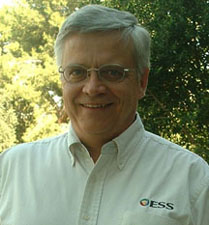
Organizations must now really look at how they manage and account for refrigerants because EPA enforcement is now a black and white issue, without loopholes clouding the enforcement process. The agency will now scrutinize systems with multiple events in a year to ensure that the original leak was really repaired. The exact location of every leak must be meticulously documented to prove multiple events were in different locations.
The new rule, which became effective March 14, 2005, requires owner/operators to choose one of two approved leak rate calculation methods - the "Rolling Average" or "Annualized" method - included in the 2005 final rule (40CFR, Part 82, Subpart f).
Since both methods all but demand some standardized approach to documenting, capturing, and managing data in order to conduct leak rate calculations in a timely manner, due diligence will be in order for operators who have allowed their tracking systems, policies, and training to languish or become obsolete.
Previously the CFR did not contain formulas for either method. The annualized formula was included in the Industrial Process Leak Repair Guidelines, but it left the calculation method open to loopholes. As a result, owners and operators had no clearly defined time requirement for calculating leak rates. Under the new rules, 365 days is the maximum for either formula.
Another loophole, one that had existed for more than a decade, was closed with the EPA's clarification of the "Alternative Refrigerant" definition. In the past, organizations that converted from chlorofluorocarbon (CFC) to an EPA-approved alternative could successfully make the legal argument that they were not required to perform mandatory leak calculations and 30/120-day leak repairs because of their conversion to a CFC alternative. The new final rule specifically addresses the requirements for Class 1 CFCs and Class II hydrochlorofluorocarbons (HCFCs).
Of course, owners and operators in every sector will have to measure the benefits of each method for themselves before deciding whether a switch is in order or to get on the ball and start calculating leak rates as they are now codified.
Refrigerant compliance management is nothing more than having zero defects in meeting all of the requirements and timelines, and having the written (electronic) "evidence" to prove it. So the changes ultimately could cause owners and operators to make better use of tools such as information management software to help them get their responses to the new mandates in order.
The software tools and services currently on the market can help organizations comply with the new final rule, not to mention avoid costly EPA penalties. These solutions also give users the means to move beyond compliance, into finding ways to create new efficiencies that assure compliance, reduce risk, and enhance the overall operational performance of their businesses.
Steven Ehrlich is vice president of compliance services at ESS. ESS is a leading provider of integrated software and services for environmental, health, and safety (EH&S) and crisis management. ESS Essential Suiteâ„¢ and Compliance Suiteâ„¢ solutions have helped more than 35,000 businesses, government agencies, and other organizations comply with international, federal, state, and local regulations and industry standards. For more information, visit www.ess-home.com.
Publication date: 04/18/2005

Report Abusive Comment